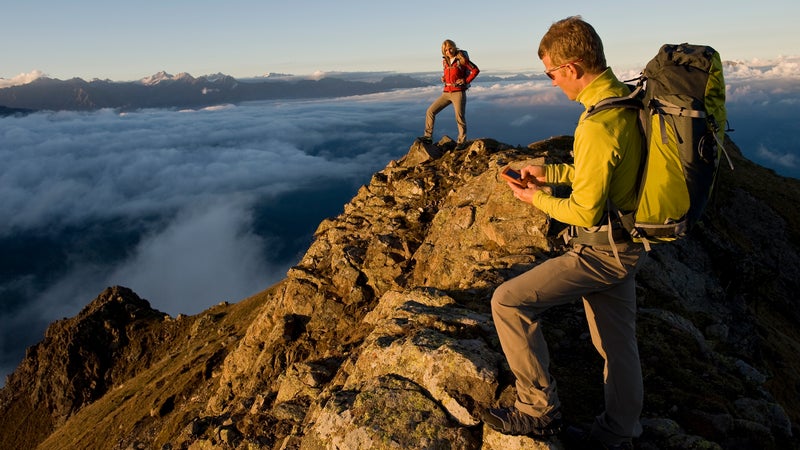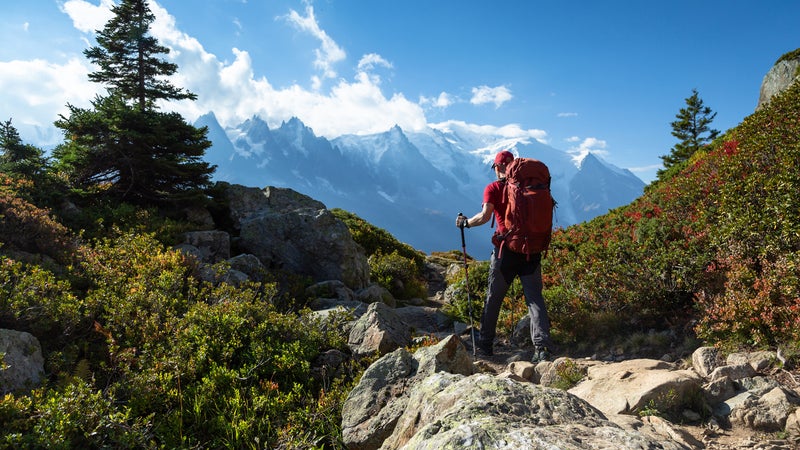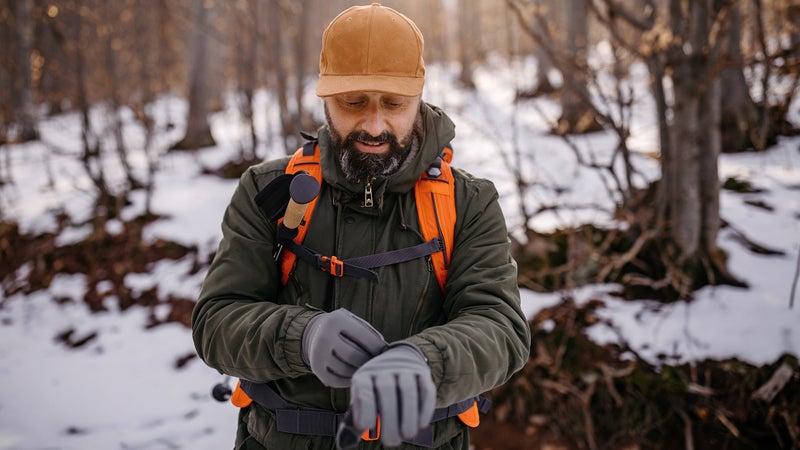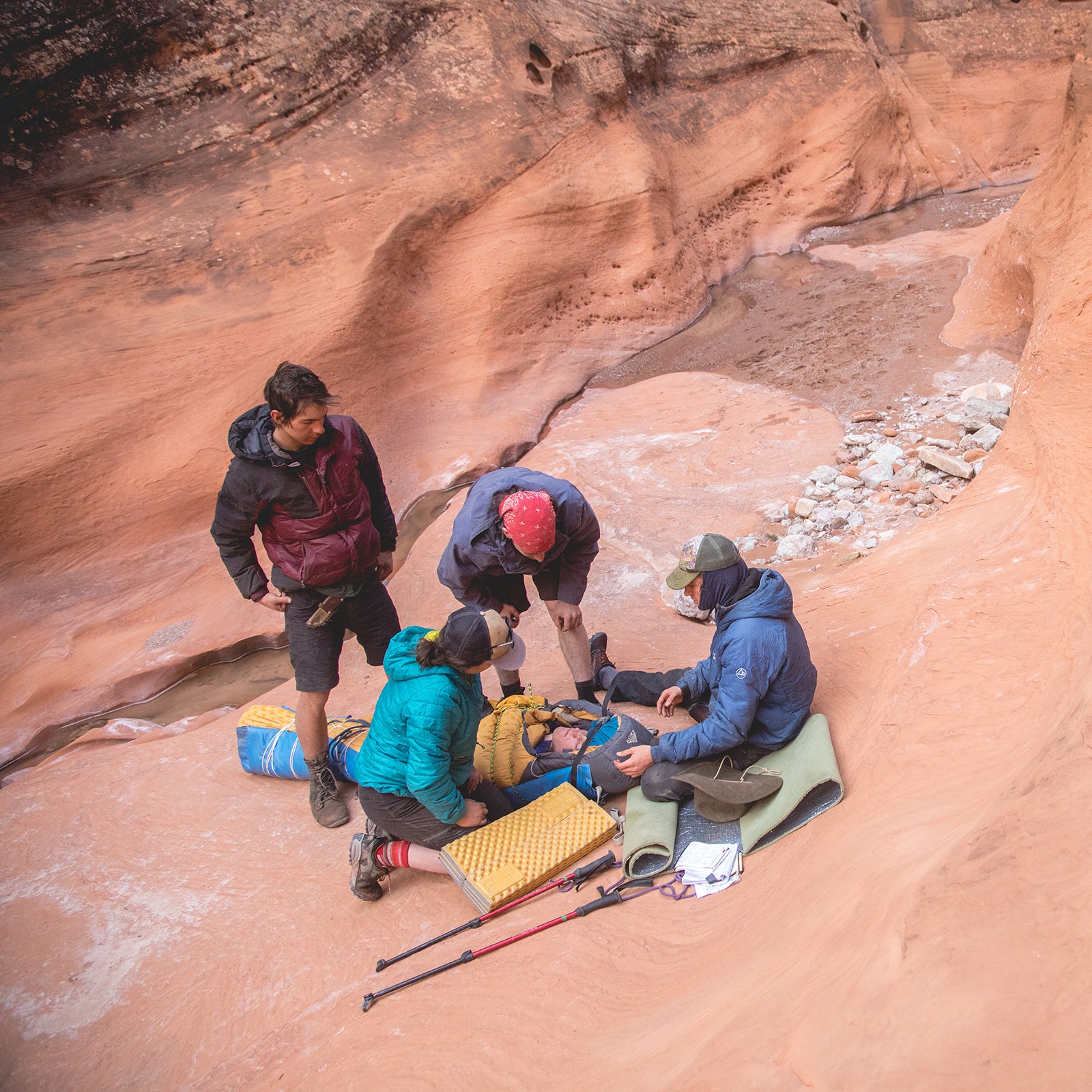Most outdoor gear can be broken down into three distinct categories: like to have, nice to have, and must-have. Hammocks, camp chairs, and summit beers fall comfortably into the first╠řcategory. Spare wool socks, bug spray, and thick air mattress are all nice-to-have items.╠řThe last category, must-haves,╠řare pieces╠řrequired for a safe backcountry trip.
Gear Fix
Sign up for our gear e-mail newsletter for in-depth reviews, first impressions, industry news, and pro DIY tips.
To learn more about the must-haves, I spoke with Erik Swanson, whoÔÇÖs been a member of WashingtonÔÇÖs for the past eight and a half years, and Olivia Leader, whoÔÇÖs been part of the team for four years. Explorer Search and Rescue╠řis one of the largest and most active volunteer organizations in the U.S. Its territory spans a county home to╠řfour╠řmillion residents, rises from╠řsea level up to 8,000 feet in the Cascades, has╠řthousands of miles of trails, and sees a very active outdoor-recreation culture. The team heads out on╠řabout 150 missions each year, primarily in response to lost, overdue, or injured hikers who arenÔÇÖt properly equipped for their outings.
After hundreds of combined missions, Swanson and Leader know the gear you need to carry to stay safe on your next adventure. Here are ║┌┴¤│ď╣¤═°‘s top picks from the categories they suggested.
GPS Communication Device╠ř

The gold standard for backcountry communication is the Garmin InReach Mini ($350), because itÔÇÖs simple to use (and can be connected╠řto your phone via Bluetooth and an app to make communications easier), reliable in almost╠řall conditions, and╠řhas╠řa fast two-way texting platform (especially through the app). With the╠řSOS feature, youÔÇÖre╠řable to call quickly for help in emergencies╠řor just let friends and family know that youÔÇÖre safe if youÔÇÖre running late.
Sufficient Hydration
The Explorer Search and Rescue╠řteam sees a lot of hikers carrying only a small water bottle for a couple hours of trekking, even in hot weather. Proper hydration, including some electrolyte replacement, like ($25 for 48), will keep you sharper both╠řmentally and physically.╠řItÔÇÖs not a bad idea to bring both a bladder and a bottle, to guarantee you have enough. We like the old faithful ($12) to start.
Rain Shell
Even in the summer, rain is common at elevation in the Cascades and in many other mountain ranges. Hiking with a reliable and breathable shell will keep you dry and warm. While itÔÇÖs a tempting item to skimp on because good waterproof jackets are spendy, we recommend investing in something durable and high quality, such as the ($325) from Helly Hansen. You wonÔÇÖt regret it, especially if you have to spend a night out in the woods.
Sturdy Boots with Ankle Support
Ankle injuries are some of the most common calls that search and rescue╠řteams respond to. Mountain trails are often narrow, cut into a hillside,╠řand╠řflanked by rocks, trees, and bushes. Eventually, everybody makes a misstep on the trail, and ankle support would save a lot of those people from injury. has long been the favorite in tough, heavyweight hiking boots. A good╠řlighter option╠řis the newly launched ($220), which is waterproof and provides great traction.
Hiking Poles

For hikers carrying a loaded╠řpack and tackling lots of vertical or technical terrain, poles will help keep you balanced, guide you past tripping hazards, and can be easily stored in your pack on more mellow terrain. New models, like the ($195) from Gossamer Gear, are lightweight and highly versatile, better positioning you to cross╠řrivers and snowfields, scramble over╠řridgelines, or march╠řup steep switchbacks.
Alpine Backpack
The search and rescue╠řteam often finds stranded hikers without a packÔÇöand without extra food, water, and layers. A small╠ř20–to–30-liter pack provides╠řenough space to allow you to bring a first aid kit, communication device, headlamp, and other items on this list. We like the ($100), a stripped-down climbing bag with good support.
Headlamp and Spare Batteries
You may think youÔÇÖre╠řjust out for a couple hours, but many hikers need help when their day doesnÔÇÖt go as planned. They often get a late start, move slower than expected, or spend more time at a summit than planned, only to╠řfind themselves heading╠řback to the trailhead in the dark. While a phone can be used as a flashlight in a pinch, itÔÇÖs better served as an emergency-communication device. The ($50) is a solid, fairly priced headlamp.
Gloves

Hiking in the Cascades often means wading through brush, including sharp blackberry bushes╠řand devilÔÇÖs club. It can also involve scrambling across boulder fields, climbing scree, and forging through╠řsnow, even in the middle of summerÔÇöhazards familiar in mountains everywhere. To protect your hands, a good pair of leather gloves is essential. That might be a pair of standard leather work gloves, but climbing gloves like the ($40) are more flexible.
This article originally attributed specific gear selections to members of King’s County Explorer Search and Rescue. These products were picked by our writer.


